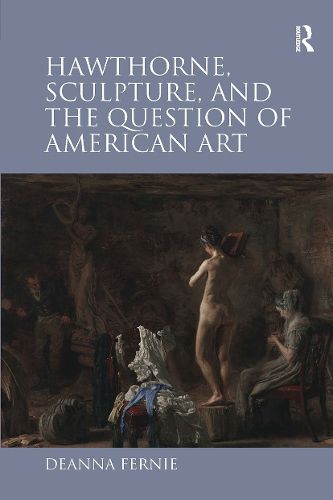Readings Newsletter
Become a Readings Member to make your shopping experience even easier.
Sign in or sign up for free!
You’re not far away from qualifying for FREE standard shipping within Australia
You’ve qualified for FREE standard shipping within Australia
The cart is loading…






Deanna Fernie analyzes the significance of sculpture in Hawthorne's fiction through the recurring motif of the fragment in its double guise as ruin and project. Her book casts new light on Hawthorne's memorable ruined and unfinished images, from the rough-hewn figurehead of 'Drowne's Wooden Image' (1844) to the tattered letter 'A' in the unfinished loft of the Custom House in The Scarlet Letter (1850) and the unfinished bust of Donatello in The Marble Faun (1860). Fernie shows how the tension between the formed and unformed enabled Hawthorne to interrogate the origins and the distinctive possibilities of art in America in relation to established European models. At the same time, she suggests that sculpture challenged and provoked Hawthorne's shaping of his own specifically literary art, stimulating him to develop its capacities for expressing irresolution and change. Fernie establishes the intellectual contexts for her study through a discussion of sculpture and fragmentary form as revealed in American, British, and Continental thought. Her book will be an important text not only for American literature scholars but also for anyone interested in British and Continental Romanticism and the intersections of art and literature.
$9.00 standard shipping within Australia
FREE standard shipping within Australia for orders over $100.00
Express & International shipping calculated at checkout
Deanna Fernie analyzes the significance of sculpture in Hawthorne's fiction through the recurring motif of the fragment in its double guise as ruin and project. Her book casts new light on Hawthorne's memorable ruined and unfinished images, from the rough-hewn figurehead of 'Drowne's Wooden Image' (1844) to the tattered letter 'A' in the unfinished loft of the Custom House in The Scarlet Letter (1850) and the unfinished bust of Donatello in The Marble Faun (1860). Fernie shows how the tension between the formed and unformed enabled Hawthorne to interrogate the origins and the distinctive possibilities of art in America in relation to established European models. At the same time, she suggests that sculpture challenged and provoked Hawthorne's shaping of his own specifically literary art, stimulating him to develop its capacities for expressing irresolution and change. Fernie establishes the intellectual contexts for her study through a discussion of sculpture and fragmentary form as revealed in American, British, and Continental thought. Her book will be an important text not only for American literature scholars but also for anyone interested in British and Continental Romanticism and the intersections of art and literature.